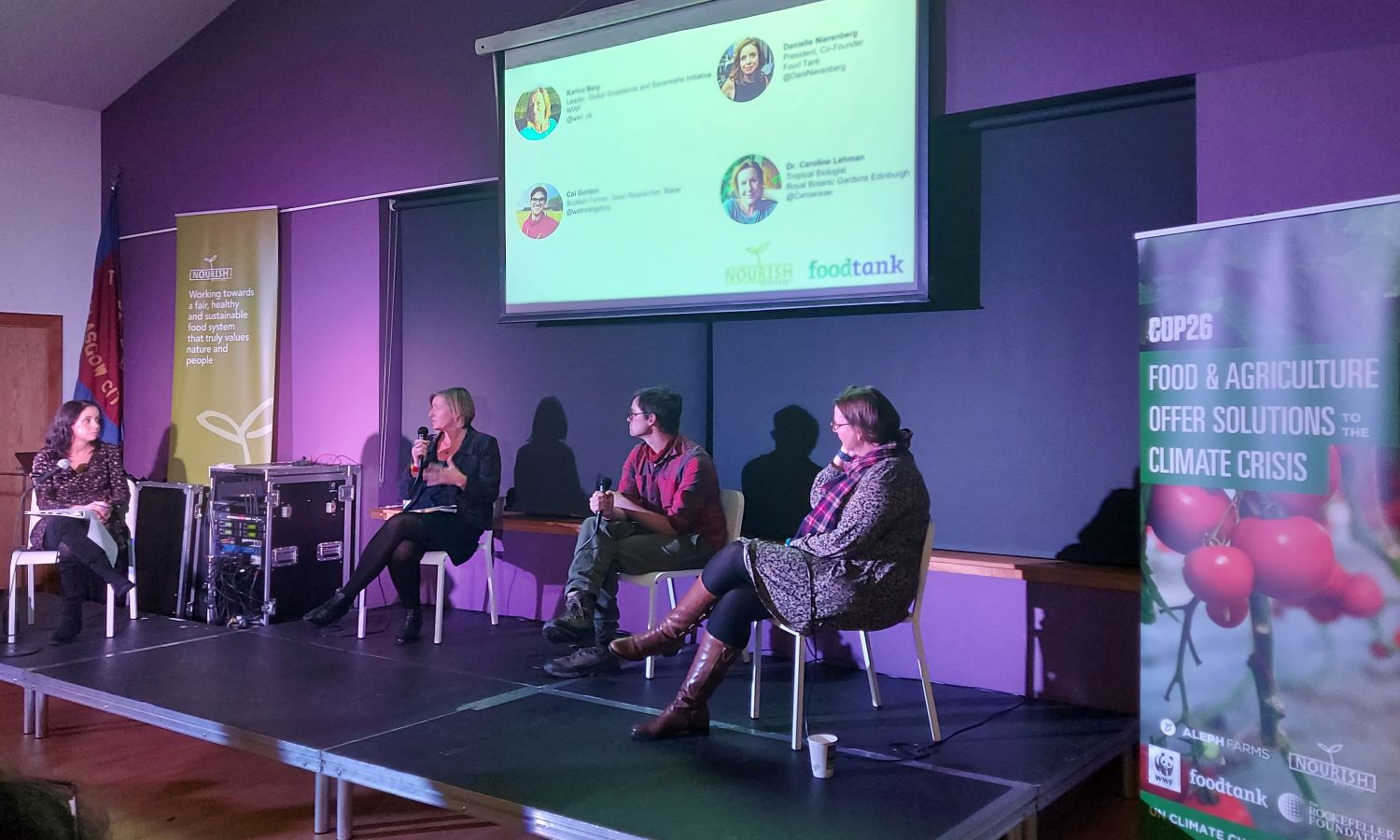Grasslands and savannahs represent some of the world’s richest and most diverse land areas, and they comprise more than half (54 percent) of the total land surface. Yet the critical importance of these ecosystems has long been ignored.
At the UN Climate Change Conference (COP26) Nourish Scotland Pavilion in Glasgow on November 9, experts gathered to discuss global grassland and savannah systems as undervalued assets and overlooked solutions in our climate agenda.
About a quarter of the global population calls some form of grassland or savannah home, and millions more rely on the ecosystem services that they provide. By locking carbon in soil through extensive root systems as deep as 60 feet (18 meters), grasslands and savannahs are also essential for climate mitigation. Yet only a small portion of countries’ carbon plans reference the protection and restoration of grassland and savannah systems—instead, the focus is largely on forests.
“These grassland biomes were actually the birthplace of our humanity, we’ve completely forgotten about that,” says Karina Berg, WWF Global Grasslands and Savannahs Initiative Lead. They also hold massive value and significance for many communities, especially Indigenous communities, and are embedded in cultural identity.
“When we talk about restoring a landscape to something that didn’t have humans in it, what are we talking about?” says Col Gordon, a Scottish Farmer with a focus on Indigenous land practices. “A lot of the great grasslands have evolved over many thousands of years with communities of humans interacting with the landscape and the flora and fauna within that landscape. They have co-evolved.”
Now, grasslands and savannahs are experiencing some of the fastest rates of biome conversion. According to WWF, both North America’s Great Plains and Brazil’s Cerrado have already lost about half of their native vegetation.
“If we’re really serious about addressing the challenges that we have ahead of us, we need to level the playing field, ensuring grasslands and savannahs are valued in the climate space,” says Berg, as well as the conservation space.
Panelists agreed that in many ways, this is a communication problem.
“It’s like the trees have stolen the limelight, and they are important. But when you’re talking about historically where we come from, actually it is those open landscapes that were really important,” says Berg.
Caroline Lehmann, Tropical Biologist at The Royal Botanic Gardens in Edinburgh, explains that grasslands and savannahs have historically been mapped by colonial explorers, for example in India or Madagascar, as kinds of wastelands. “These systems have already been discarded for hundreds of years,” Lehmann says.
Better communication must bring Indigenous peoples into the scientific conversations surrounding conservation efforts, looking at the on-the-ground and experiential evidence already within these communities. Lehmann would like to see more science and evidence-based, biodiverse, and culturally appropriate restoration guides for climate finance.
“Right now, we see this giant disconnect between ambition and the capacity for execution in a biologically reasonable way. And it’s largely driven out of a desperation for net-zero,” says Lehmann. “Because of that, we see a vast amount of money for climate finance unlocked—which influences land use policy globally—and that is leading to a rush for tree-planting that is like a runaway train, it’s unstoppable.”
Those working with grasslands and savannahs can look to the collective advocacy efforts that have benefited forest restoration initiatives.
“Maybe it’s just that ‘grassland and savannahs’ is a mouthful,” Lehmann says. “But we cannot move forward without a collective voice.”
According to Berg, expanding the conservation narrative can come down to simply adding two words: “shifting national deforestation pledges to ‘deforestation and conversion’ would already incorporate so much more than just forests.”
Because the difference between a tree standing and being taken down is so stark, deforestation issues are easily understandable for the general public. “You can say we’re going to plant X number of trees, and it’s something really tangible for people to get a hold of,” says Berg. The challenge for grasslands and savannahs is their problems and solutions are more complex and nuanced—yet no less important.
“Semantics really matter,” Nierenberg agrees.











